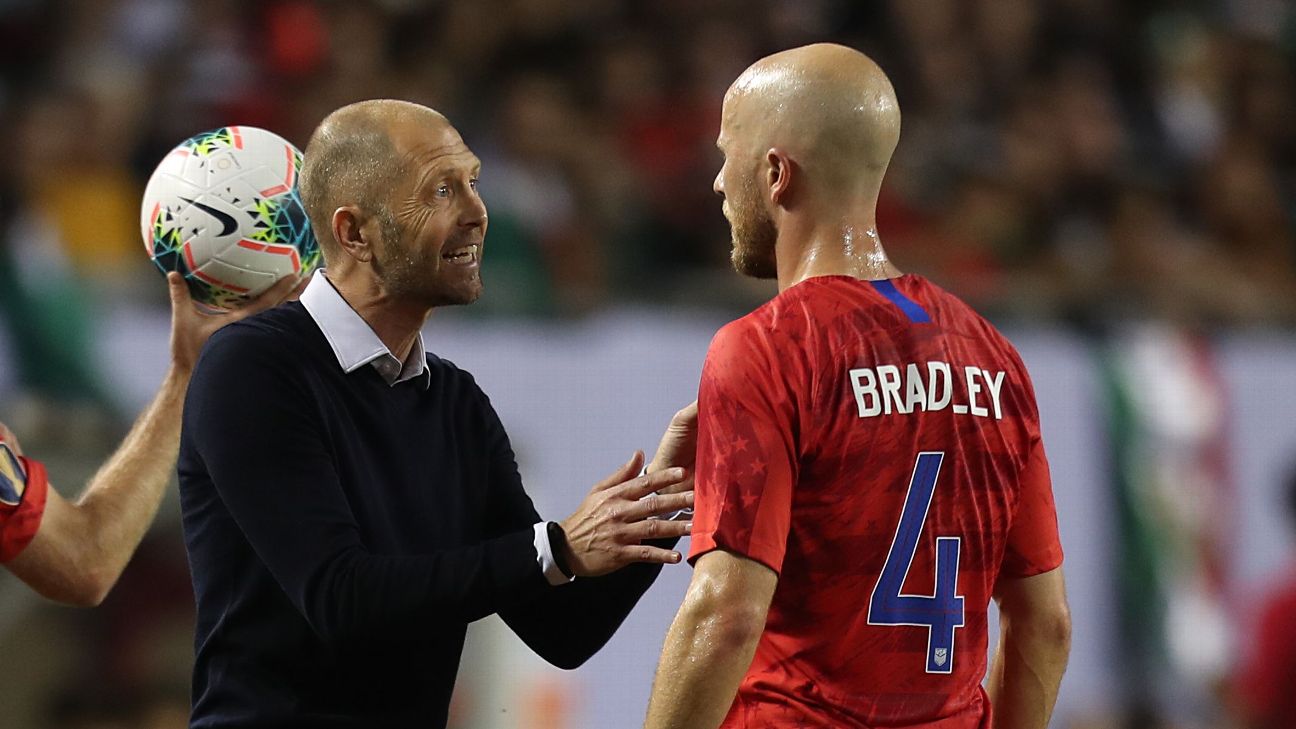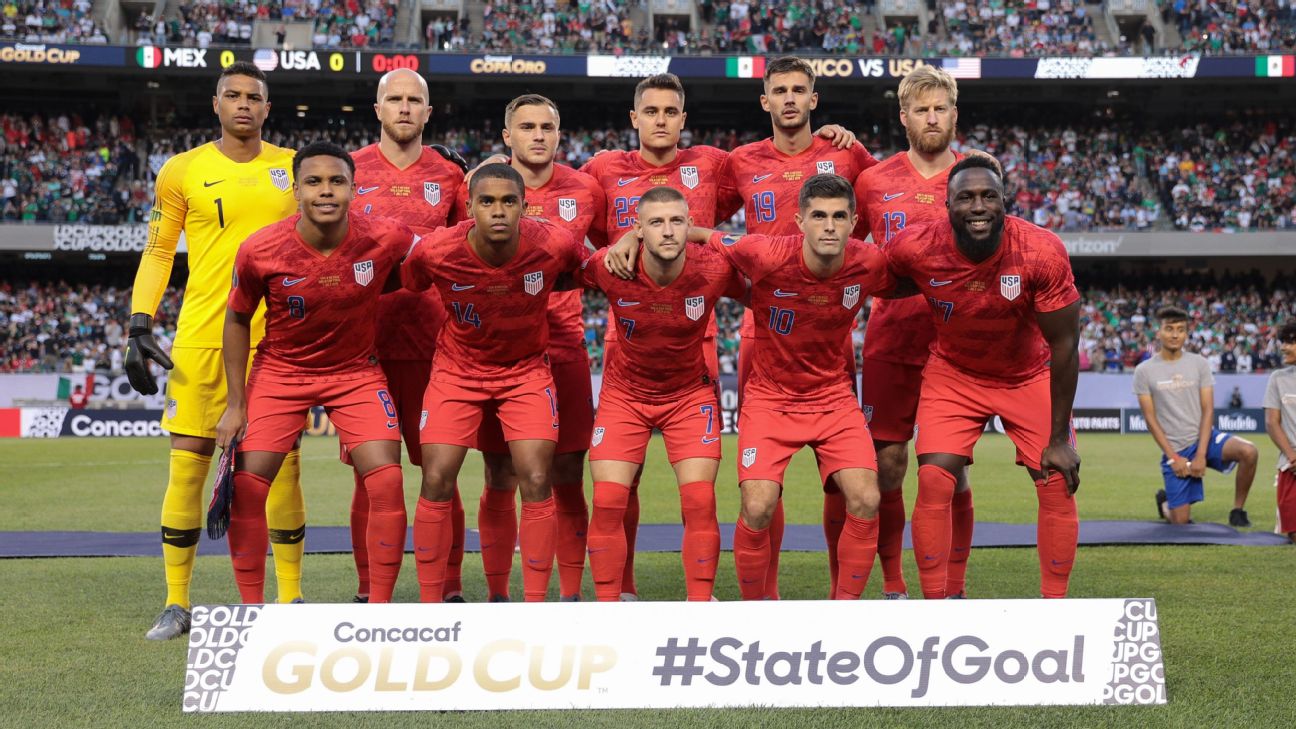The conclusion of the Gold Cup brought about mixed emotions for the U.S. men’s national team. There was disappointment at the 1-0 final defeat to arch-rivals Mexico, especially given the fact that the tournament hosts squandered several wide-open scoring chances.
By the end of the game, El Tri‘s talent advantage carried the day but in the context of the entire competition, there was a modicum of satisfaction that a foundation had been laid down. Relationships have begun to be established and there is a greater understanding of the methods of manager Gregg Berhalter.
Look long enough at the foundation and one can dream of what is possible. But the potential pitfalls can be seen as well.
– Gold Cup final: Mexico offer U.S. a harsh lesson
– U.S. ratings: Bradley, Morris too slow
– Carlisle/Marshall: Do the U.S., Mexico still care about Gold Cup?
– Freddy Adu exclusive: “I’m not ready to give it up”
There is a tendency to think that the work Berhalter will do over the coming months should determine the relative success or failure of the U.S. men. That’s true to a degree but it isn’t just in Chicago that the U.S. team’s fortunes will be decided; places like Bremen, London, Gelsenkirchen and Leipzig will be active too. The same is true in MLS cities like Dallas, New York, Washington, D.C. and San Jose.
In fact, the upcoming club season in Europe, and the ongoing campaign in MLS, are arguably the most important in U.S. national team history. If players like Weston McKennie, Tyler Adams, Josh Sargent and yes, even Christian Pulisic can continue to take on bigger roles with their clubs, then Berhalter’s task becomes easier. If not, he’s basically being asked to build a house without the requisite tools.
Progress can’t fall entirely on those players either. The U.S. remains a team short of quality depth and others will need to emerge.
As is often the case for the U.S., the defensive side of the ball is ahead of the attack in terms of progress. In fact, the goalkeeper and back four looks to be progressing nicely. Zack Steffen has performed well enough to command the No. 1 jersey. The U.S. is also accumulating some depth along the back line, especially at center-back with the likes of Aaron Long, Walker Zimmerman and Matt Miazga. It’s worth remembering too that John Brooks remains in the mix. There are also options at right-back with Reggie Cannon and Nick Lima to go along with DeAndre Yedlin, who like Brooks missed the Gold Cup through injury.
Left-back remains a problem area. Tim Ream has filled in admirably but there’s no denying that he is a center-back by trade and is an imperfect fit for the role, especially given his limitations going forward. One can only hope that U-20 left back Chris Gloster or Antonee Robinson can progress enough and give Berhalter confidence that they’re part of the present and not perpetually a part of the future.
Further upfield, the questions surrounding this U.S. team become more complicated. The single biggest issue going forward is where Berhalter plans on playing Tyler Adams. The best part about the emergence of Lima and Cannon is that it may yet make Berhalter more willing to shelve the idea of playing Adams as a right-back.
There’s a perception that Berhalter is wedded to the idea of playing Adams in that hybrid right-back/central midfield role. But during a pre-tournament interview with ESPN FC, Berhalter hinted at being flexible on the subject, saying he thought Adams’ skillset was “more central than wide” and that his best position is “something we have to analyze.”
Adams might not have the passing range of a Michael Bradley or a Wil Trapp, but he seems born to play the role of midfield destroyer given his range, work rate, tackling and ability on the ball. A central partnership involving Adams and McKennie looks potent down the line provided that the Schalke man can find a greater degree of consistency, especially in terms of how well he takes care of the ball. Paxton Pomykal‘s continued development with FC Dallas will bear watching, as will Derby County’s Duane Holmes.
As for Bradley’s continued involvement, his passing remains his strength even as it eroded in the second half against Mexico. Defensively he’s become more of a question mark as his legs aren’t what they used to be. His positioning is savvy, but his tendency at times to go into “hero mode” highlighted the lack of cohesion he had at times with McKennie, hence the calls for Adams to assume his role in front of the back line.

The wing positions remain in flux as well. Paul Arriola remains a tireless worker on the left flank and that has value, but the U.S. needs a more creativity from the opposite flank. Jordan Morris struggled mightily in the final, while Tyler Boyd was mysteriously absent. The competition for that position remains open, with Tim Weah in the mix as well.
As for the forward position, Jozy Altidore showed his value during the Gold Cup though Berhalter’s faith in the forward seems tenuous, as he appeared to ration the Toronto striker’s minutes. For now, he looks to be the de facto starter but much will depend on the development of Sargent. The Werder Bremen man faded during the latter portion of the club season, unable to displace 40-year-old Claudio Pizarro as the first forward off the bench. He’ll need to bull his way into the Bremen side in order to achieve a similar breakthrough at the international level.
For now, establishing greater depth is a massive priority for Berhalter and there are multiple avenues to further that process along. Next on the horizon is a CONCACAF Nations League group with Cuba and Canada, their games scheduled for October and November. It seems like the kind of competition that won’t necessarily see Berhalter bring in all of his first-choice roster, though testing out the depths of the player pool isn’t a bad thing.
Perhaps more critical to the USMNT’s progress towards the 2022 World Cup is the development of the Olympic roster under manager Jason Kreis. It’s a competition often met with disdain by European clubs, who are loath to release their players, but it still provides international experience for up and coming performers. The 2010 World Cup roster was graced with six players who appeared at the 2008 Olympics in Beijing. (The injured Charlie Davies would have made seven.)
Maximizing each of these competitions should give Berhalter more material with which to work, and help ensure that the work done over the last month remains valuable down the road.
